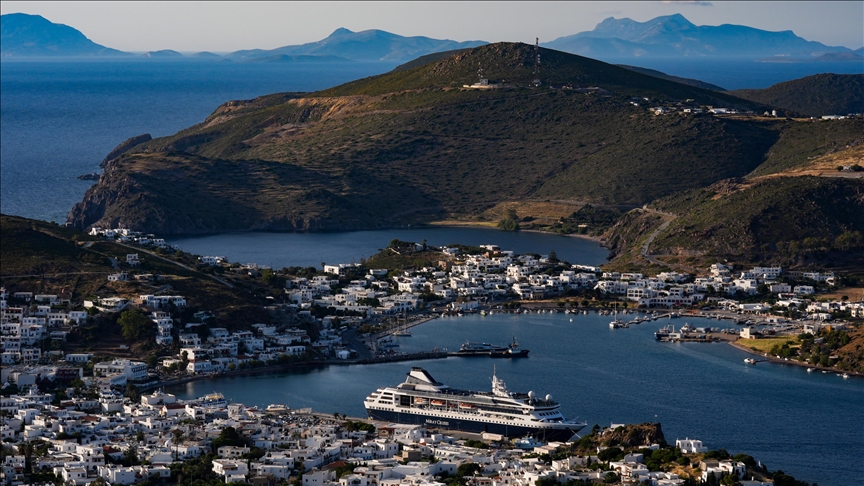LEROS, Greece/MUGLA, Türkiye
Leros, one of the Greek islands hugging the shore of modern Türkiye, known as Ileriye, or Ileryoz, during four centuries of Ottoman rule (1522 – 1912), is mostly known as a tranquil getaway.
But it also bears the haunting scars of one of the world’s darkest eras — World War II.
The island, located 317 kilometers (197 miles) from Athens’ port of Piraeus and 32 kilometers from Didim in Türkiye’s coastal province of Aydin, spans 53 square kilometers (20.5 square miles), with a population of around 10,000.

Since it was included in Greece’s gate visa program for Turkish nationals, Leros has become a popular holiday destination for Turkish tourists, accessible by ferry from Bodrum in about an hour.
Despite not being widely recognized in the past, residents strive to gain more from tourism.
Agriculture and fishing are also significant livelihoods on the island, surrounded by vineyards and olive trees.
Grim face of war exhibited in island’s museum
While Leros has gained recognition in recent years for its tranquility, it also bears the haunting scars of World War II.
As part of the Dodecanese Islands, Leros surprises visitors with traces of conflict.
The remnants of wartime bombardments, which killed hundreds, are preserved in the Lakki War Museum in the coastal village of Alinda, where intense battles occurred.

The museum portrays the bloody conflicts among the factions during the war — German, Italian, and British forces – along with the struggle for survival and the horrors experienced, with a screening of a nine-minute documentary.
Located on a hill near the beach, the museum houses tunnels from the war years and artifacts such as bullet-riddled helmets, weapons, shells, cannons, military uniforms, gas masks, a blood-stained stretcher, and military vehicles that reveal the grim face of war.

Fair treatment of Turks is not forgotten
Leros’ residents still speak of the tolerance of Ottoman soldiers who, despite their rule on the island for 400 years, did not interfere with places of worship and maintained good relations with the local population.
Although there are no remaining Ottoman-era structures on the island, the fair treatment of Turks is not forgotten.
Tour guide Antonis Ntallaris told Anadolu that there is a Byzantine castle dating to the Middle Ages at the highest point, Pandeli.
He said a church was established in the historical structure overlooking the beautiful scenery, and an icon depicting the Virgin Mary and Jesus was placed there by Ottoman soldiers.
Ntallaris added that the icon was found in a boat on the shore of the island. “This place is more than just a church. Festivals are held on Aug. 14 and 15 related to the finding of the icon,” he said.

Ntallaris noted the story of the discovery and placement of the icon that is considered sacred.
“Fishermen found this icon one morning in an empty boat. They spread the word, and a Christian clergyman on the island came and took the icon. They brought it to a church in the center of the island. The next morning, the icon couldn’t be found in its place. Mysteriously, it had disappeared in the same way a few times before. They couldn’t locate where it had gone.
“They informed the Ottoman soldiers stationed on the island. The Ottoman soldiers found the icon in the same boat at the same spot. The local leaders of the island, along with the people and Ottoman soldiers, decided to leave the icon in the castle, where it has remained since. Since then, many people have come here to see this painting. It’s a holy place. Wishes are made here, and vows are dedicated,” he said.
Ntallaris provided information about the museum, highlighting intense conflicts during the war on the island.
He noted that the war began in September 1943 in Leros, with approximately 53 days of bloody conflict.
“This was an Italian base. There were bloody battles between the Germans who invaded the island and Italian and British forces. Around 900 people died. You can see deep traces of the war all over Leros,” he said.

